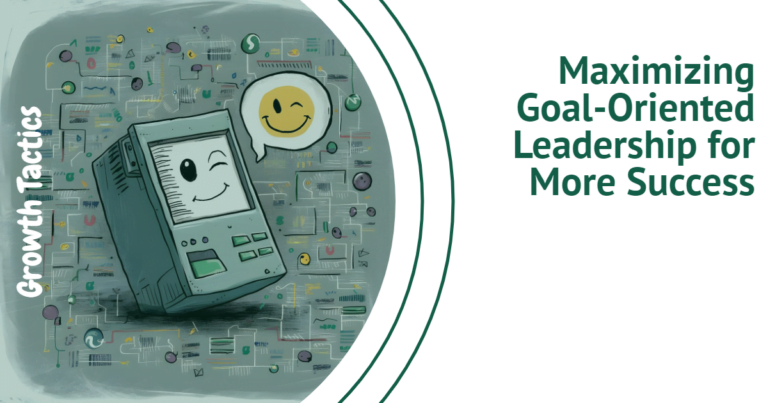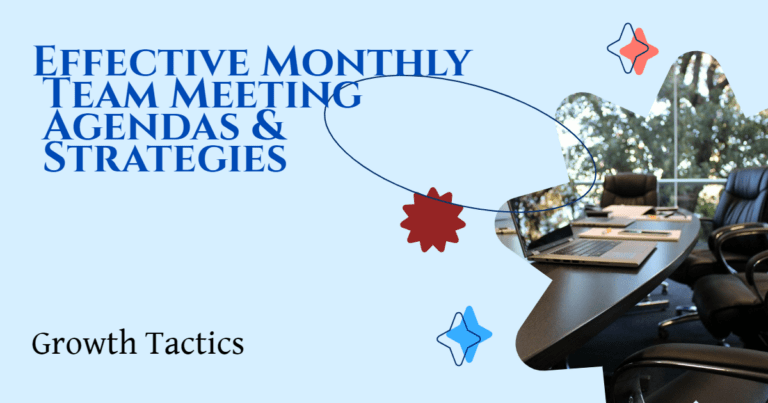Do you want to develop more as a leader?
It’s no secret that successful leaders are those who are constantly striving for growth and improvement. After all, in today’s fast-paced business world, if you’re not learning and developing, you’re falling behind. That’s why managers and executives need to set leadership development goals that will help them reach their full potential.
Leadership development goals differ from other performance objectives in that they focus on developing skills and abilities rather than simply completing tasks. By setting goals that focus on improving personal knowledge and abilities, managers and executives can not only improve their performance but also their team’s performance.
Jump To Section
What is Leadership Development?
Leadership development is the process of improving the skills and qualities of an individual to become a more effective leader. It involves focusing on particular areas, such as communication, problem-solving, decision-making, and team-building, to develop the individual’s leadership potential.
What Skills Should Leaders Focus On?
Leaders should work on developing a range of skills including:
- Communication – Communication is an essential skill for any leader. Without effective communication, leaders cannot effectively lead their teams, foster collaboration, or motivate and inspire their team members. Leaders must be able to communicate clearly, listen actively, and understand the needs of their team to be successful.
- Decision-making – When it comes to decision-making, leaders need to take the time to consider all factors, weigh the pros and cons, and make a decision that is in the best interest of the organization. Leaders should also be sure to remain open to feedback, as this can help them make more informed decisions. Additionally, leaders need to be aware of potential biases and make sure their decisions are not influenced by them.
- Problem-solving – Good problem-solving starts with understanding the root cause of the problem. Leaders should take the time to fully analyze the situation, consider all possible solutions, and weigh the pros and cons of each option before making a decision. Leaders should also be open to feedback and willing to look at the problem from different perspectives.
- Conflict management – When it comes to conflict management, leaders should strive to understand the root causes of the conflict and create a plan to address them. Leaders should also take the time to learn how to effectively resolve conflict while maintaining a positive work environment. Additionally, leaders need to remain open to feedback and look at the situation from different perspectives to achieve a successful resolution.
- Coaching – By developing coaching leadership skills, professionals can help their organizations reach their goals and empower their team members. With the right skills, leaders can make a real difference in their team’s success.
- Motivating and inspiring others – The ability to motivate others is an essential skill for any successful leader. By understanding the different aspects of effective leadership, as well as how to motivate and inspire your team, you can help your organization reach its goals and foster collaboration among your team members.
- Team-building – Team building is an essential part of successful leadership. Building trust and collaboration among team members can help to create a more productive, successful, and enjoyable work environment. As a leader, it’s important to understand the importance of team building and how to effectively create an environment where team members can work together and succeed.
- Leading with empathy and compassion – Empathy is an essential skill for any leader. As a leader, it’s important to understand the perspectives of your team and be able to respond and communicate in a way that fosters an open, collaborative environment.
- Project management – As a leader, effective project management is essential for success. It can help you increase productivity and achieve your goals, while also creating a more organized, efficient, and enjoyable work environment.
- Time management – Time management is an essential skill for any leader. With the right strategies and tools, leaders can maximize their time, increase their productivity, and ensure the successful completion of projects.
- Networking – Networking is an essential skill for any leader. Building relationships and maintaining connections with other professionals in your field can lead to new opportunities, resources, and insights.
- Strategic thinking – Strategic thinking is an essential skill for any leader. Understanding the complexities of the external environment, setting meaningful goals, and making informed decisions are all key components of effective leadership.
- Taking initiative – Leadership is about taking initiative and making things happen. Taking initiative requires courage, confidence, and creative problem-solving skills. It also requires the ability to assess risks, identify opportunities, and make informed decisions.
- Fostering collaboration – Fostering collaboration as a leader is an essential part of running a successful team. By providing clear guidance and direction, encouraging open communication, being an active listener, and valuing diversity and different perspectives, leaders can create an environment where team members feel comfortable and empowered to collaborate.
Leaders should also have knowledge related to the field or industry in which they are operating, and have a deep understanding of their team’s strengths, weaknesses, and dynamics. Additionally, developing personal qualities such as self-awareness, humility, resilience, and adaptability are key for successful leadership.
Create a Leadership Development Plan
Leadership development plans outline the steps that an individual needs to take to become a better leader. These plans typically include skills to improve, responsibilities to take on, and tasks to complete. The process of leadership development also involves building alignment, winning mindshare, and growing the capabilities of others.
In the journey of building a foolproof leadership development plan, a thoughtful, precise approach leads the way. Here’s a step-by-step guide that will act as your roadmap.
Step 1: Self-Assessment
Start with understanding yourself. Reflect on:
- Your strengths: What do you excel at?
- Your weaknesses: Where can you improve?
- Your values: What drives you?
Think about past experiences, both successes and failures. This self-awareness is critical. In the Air Force, we’d always evaluate ourselves to grow stronger.
Step 2: Set Clear Goals
What do you want to achieve? Your goals should be specific, measurable, attainable, relevant, and time-bound (SMART). For example:
- Short-Term: Improve delegation skills within six months.
- Long-Term: Lead a cross-functional team within two years.
Your goals need to resonate with you. They should be meaningful and aligned with your purpose.
Step 3: Seek Feedback
Feedback is a gift. Talk to peers, mentors, and team members. Ask:
- What do you think are my strongest leadership qualities?
- Where do you see opportunities for my growth?
Listen carefully and accept feedback with humility. Everyone’s perspective can teach you something valuable.
Step 4: Create an Action Plan
Break your goals into actionable steps. If improving communication is a goal, your steps might look like:
- Attend a public speaking workshop.
- Practice active listening in meetings.
- Ask for feedback on your communication skills weekly.
Make your plan specific and actionable. Stick to it.
Step 5: Find a Mentor
Mentors provide guidance, support, and a different perspective. Choose someone you respect and trust. Remember, a mentor’s role is to guide, not to dictate. Their Air Force experience or leadership background can be invaluable.
Step 6: Continuous Learning
Leadership isn’t static. Keep learning:
- Read leadership books and articles.
- Attend seminars and workshops.
- Join a leadership group or network.
Commit to lifelong learning. Growth never ends.
Step 7: Reflect and Adjust
Regularly review your progress. Ask yourself:
- Am I closer to my goals?
- What’s working? What’s not?
Be honest with yourself. Adjust your plan as needed. Flexibility will keep you on track.
Step 8: Lead with Purpose
Always remember why you started this journey. Your purpose fuels your actions. As you grow, help others along the way. Leadership is about lifting others while you climb.
Keep pushing forward with your unique approach toward your leadership development goals. Focus on your growth, with purpose guiding every step. Your journey is personal and powerful. Lead with heart and intention. You’re building something great, not just for yourself but for those you lead.
Use SMART Leadership Development Goals
SMART goals are goals that are specific, measurable, achievable, realistic, and time-bound. They are used to help guide goal setting and increase the chances of achieving the goal. Specific goals are well-defined and clear, measurable goals can be tracked, achievable goals are realistic and achievable, realistic goals are achievable and relevant to the situation, and time-bound goals have a set timeline for completion.
Leadership Development Goals Examples
- Develop Your Communication Skills – One of the most critical skills for any leader is effective communication. This includes the ability to communicate clearly, listen actively, and understand the needs of the team.
- Show Encouragement – Leaders should strive to provide positive reinforcement and recognize the efforts of their team members. This can help create a positive work environment and motivate employees to do their best work.
- Offer Small Rewards – Rewarding employees for their successes can be a great way to show appreciation and encourage them to continue to strive for excellence.
- Schedule Team-Building Exercises – Team-building exercises can help foster collaboration, trust, and understanding between team members. This can help create a more productive and cohesive team.
- Set Weekly Milestones – Leaders should set weekly goals for their team to help keep them focused and motivated. This can help ensure that the team is working towards a common goal and staying on track.
- Coach Team Members – Leaders should strive to provide guidance and mentorship to their team members. This can help them develop their skills and reach their goals.
- Set Goals for Structured Improvement – Leaders should set goals for their teams to help them improve their processes and become more efficient. This can help the team become more productive and successful.
- Use Active Listening – Leaders should strive to listen actively to their team members and understand their needs. This can help create a more open and collaborative environment.
- Build Internal Talent – Leaders should strive to develop the skills of their team members and help them reach their potential. This can help create a more successful and productive team.
- Improve Systems for Knowledge Sharing – Leaders should strive to create systems that allow for easy and effective knowledge sharing. This can help ensure that everyone is on the same page and working towards a common goal.
Did you enjoy this article on leadership development goals? Please share and subscribe below.








